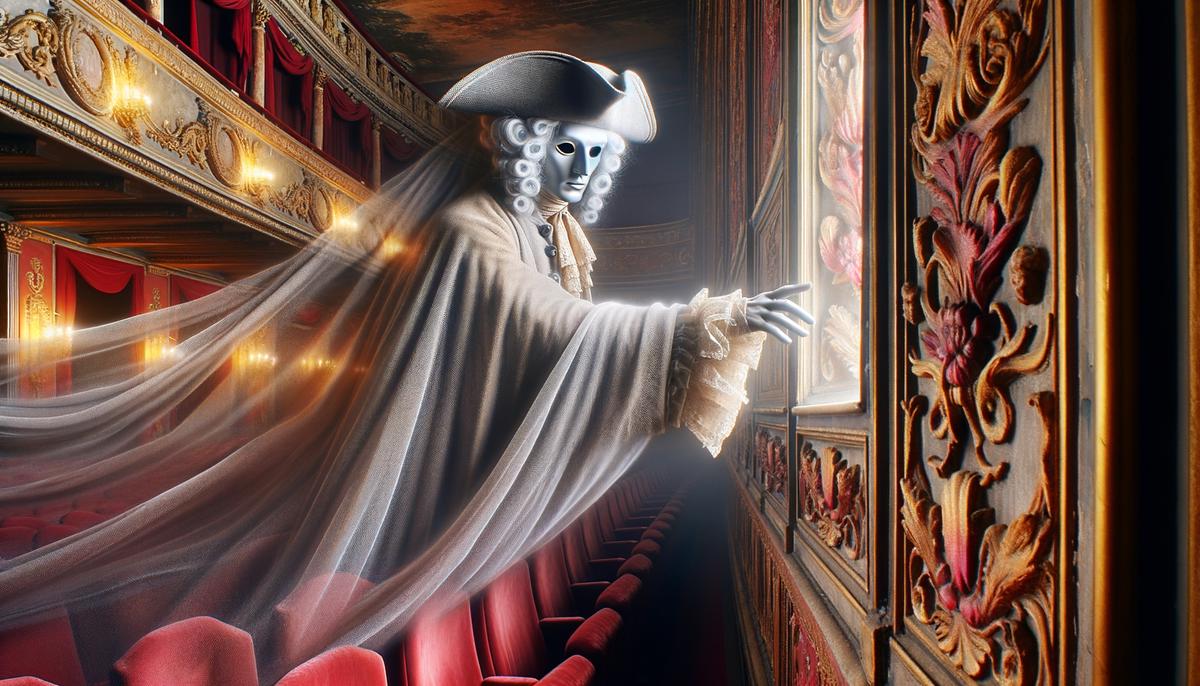The Man in Grey
The Man in Grey of Drury Lane Theatre is a chilling and enigmatic figure. Often spotted during matinee performances and rehearsals, this ghostly presence emerges in attire from a bygone era. He wears a powdered wig, tricorn hat, and long grey cloak, striding purposefully through the theatre's upper circle before vanishing into a wall near the royal box.
Actors have long noted that sightings of the Man in Grey predict a successful show. This peculiar omen has been tied to the theatre's biggest hits, including productions like "The King and I" and "South Pacific."
The roots of his legend are entangled with tragedy. In the mid-1800s, workers renovating the theatre uncovered a grim discovery:
A walled-up cavity containing a skeleton, with a knife lodged in its ribs, wrapped in grey rags.
This macabre finding spurred theories linking the remains to the Man in Grey, suggesting he might have been a gentleman murdered by a rival suitor.
Despite these theories, no definitive identity has been pinned to the Man in Grey. He remains a ghost of routine, his spectral route as fixed as the sun's path. For many actors, seeing him is akin to a rite of passage, placing them within a continuum of performers who have graced the Drury Lane stage.
The Man in Grey isn't the only ethereal resident here. Tales of actor Charles Macklin, who killed a fellow performer in a fit of rage, and legendary clown Joseph Grimaldi, whose ghost reportedly coaches actors, also pervade the theatre's lore. But unlike Macklin's malevolent myth or Grimaldi's mischievous spirit, the Man in Grey is a figure of solemn mystery, a spectral guardian of the theatre.
His sightings are a curious mix of terror and tradition. Each appearance brings with it a breeze from London's past, a reminder of the stories that built the city's storied West End.
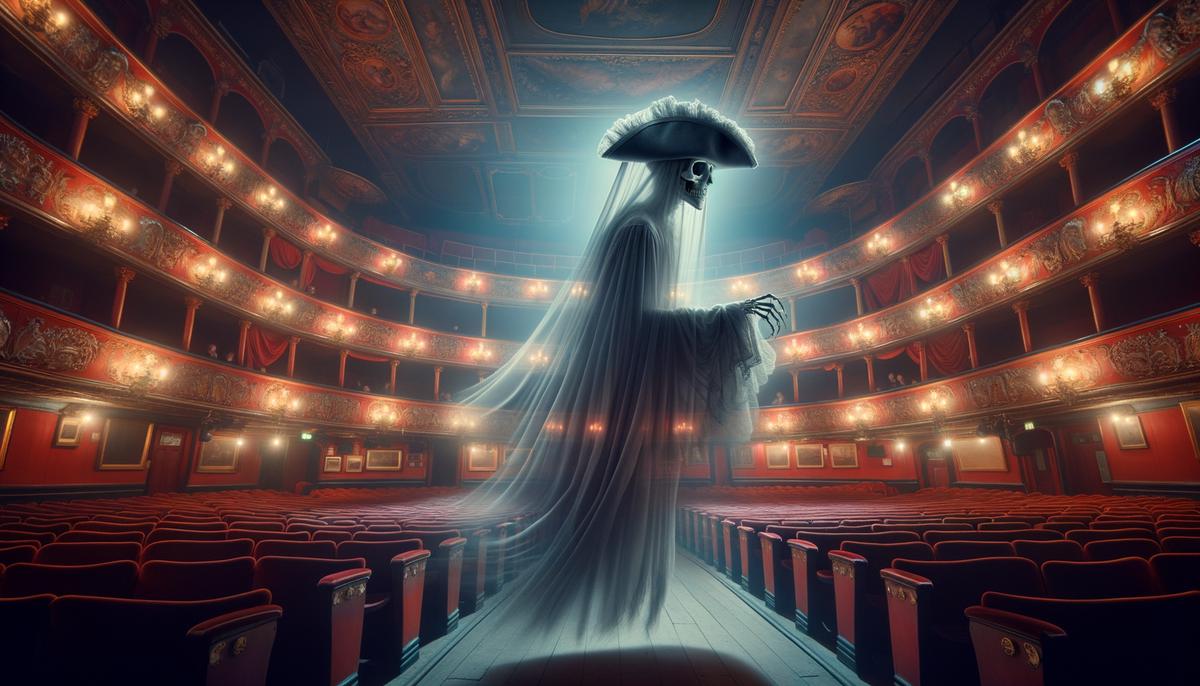
Other Notable Ghosts
Charles Macklin's tale is both gruesome and gripping. In 1735, an argument over a wig led Macklin to murder his fellow actor Thomas Hallam by thrusting a cane into his eye. This haunting episode lingered, with Macklin's restless ghost reportedly wandering the corridors near the scene of the crime. Those who have encountered his presence describe a chilling atmosphere, as if the air itself recalls the fury and violence of that fateful night.
Dan Leno, a beloved comedian of the Victorian era, is said to haunt his former dressing room. The telltale sign of his presence is the overwhelming scent of lavender, a fragrance he famously used to mask his incontinence. Some have also heard the rhythmic tapping of clog dancing, Leno's signature act, echoing through the halls.
Joe Grimaldi, another venerable figure of Drury Lane, haunts the theater with a mix of eerie and endearing gestures. Actors who have felt a playful nip on the rear or an encouraging pat on the back attribute these friendly antics to Grimaldi's spirit. His severed spectral visage has even been seen peering from theater boxes, a stark yet oddly comforting sight for those who believe he's keeping a watchful eye on the performances.
The presence of these ghosts—Macklin, Leno, and Grimaldi—each add a unique brushstroke to Drury Lane's vibrant history. They personify the theatre's rich past, blending the laughter, drama, and even tragedy that unfolded on its stage. For those who tread the boards today, the heritage of these spectral forebears is both a privilege and a haunting echo, imbued with the power and passion that defines London's illustrious West End.
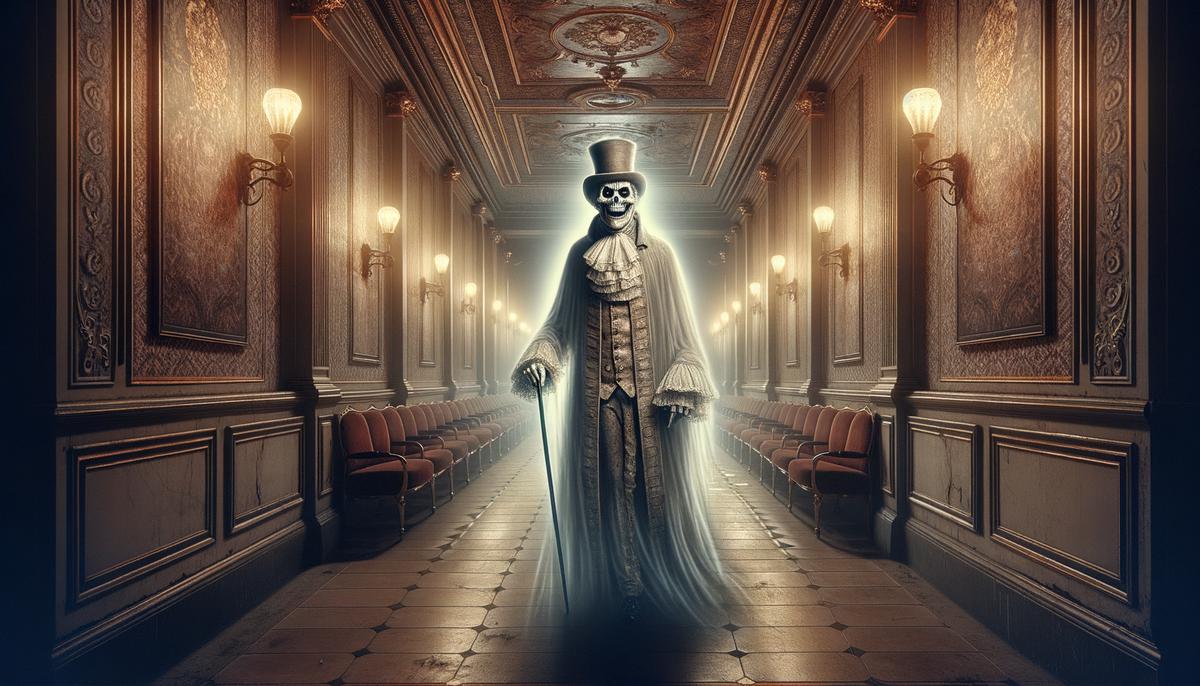
The Haunted History of Drury Lane Theatre
The Drury Lane Theatre has undergone several reincarnations since its original inception in 1663. Each iteration of the theater has brought with it not only architectural splendor but also a bevy of hauntings that seem to stem from its tumultuous past.
The Four Incarnations of Drury Lane Theatre:
- 1663: Established by Thomas Killigrew under royal charter
- 1674: Rebuilt after the 1672 fire, designed by Christopher Wren
- 1794: Constructed after the 1791 fire
- 1812: Current building, designed by Benjamin Dean Wyatt
The first theater, established by playwright Thomas Killigrew under a royal charter from King Charles II, quickly became a cornerstone of London's cultural scene. However, fate wasn't kind to Killigrew's creation. The Great Fire of London in 1666 spared the establishment, but a later fire in 1672 didn't.
A third theater, constructed in 1794, saw one of Drury Lane's most scandalous episodes—the failed assassination attempt on King George III. In 1800, at a crowded performance, James Hadfield fired a pistol at the monarch. By a stroke of luck, Hadfield's shot went astray. The King's calm directive to "Go on!" to the playhouse reflects an almost supernatural composure amidst chaos. This iteration, too, succumbed to fire in 1809.
The current and fourth Drury Lane Theatre, constructed in 1812 by Benjamin Dean Wyatt, has stood the test of time. Despite its longevity, the history embedded within its walls seems to call forth more than just historical recollections. It seems to act as a magnet for spectral activity, making it one of the most haunted locations in London's West End.
The theatre's historical account intertwines seamlessly with its ghost lore. The discovery of the skeleton walled up within the theater during the 1848 renovations coincides with stories of the Man in Grey, suggesting the unsettled spirit may indeed be tied to early tragedies. Perhaps the fires themselves, consuming not just wood and gold leaf but also dreams and lives, have etched an indelible mark on the ethereal fabric of the place.
As audiences sit, engrossed in the latest production, a cold breeze may sweep through the upper circles, or an unexplained shiver might ripple through the row. It's a subtle nod from the theatre's history, a gentle reminder that they're sharing the space with the echoes of its former, often ghostly, residents.
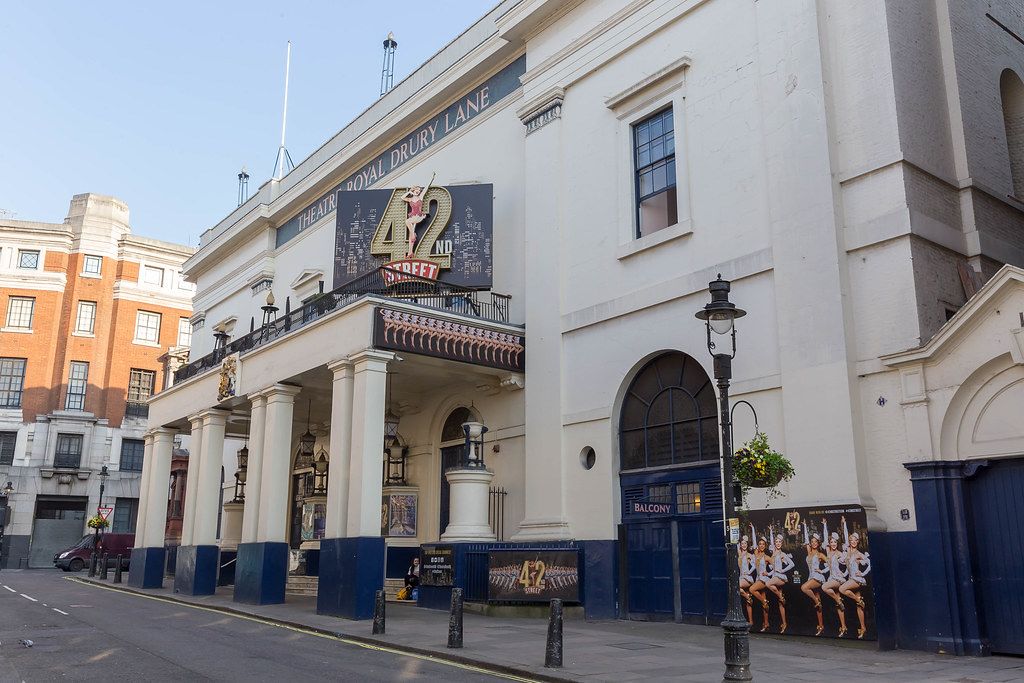
Modern Encounters and Investigations
Modern-day encounters with the paranormal at the Drury Lane Theatre continue to enthrall both skeptics and believers alike. Actors, staff, and visitors to this historical establishment have reported a multitude of ghostly experiences that defy rational explanation.
Notable Modern Encounters:
- Clive Carter: Experienced unexplained TV channel changes in his dressing room
- Patrick Stewart: Reportedly saw the ghost of former theater manager John Baldwin Buckstone
- Roger Clarke: Professional ghost hunter detected anomalies during a tour
- "Most Haunted" TV Show: Captured unexplained phenomena on camera
Clive Carter, an actor preparing for his role in "Charlie and the Chocolate Factory," had an unusual experience in his dressing room. While chatting with a colleague about the theater's legends, they noticed the TV's channel changing on its own. Baffled, they realized neither was near enough to the remote. This otherworldly experience sent shivers down their spines, especially when it repeated whenever they mentioned the ghosts.
Patrick Stewart, during his tenure in "Waiting for Godot," reportedly saw the ghost of a former theater manager, John Baldwin Buckstone. The spectral sighting, shared with his fellow cast members, speaks volumes about the recurring apparitions at this storied location.
Professional ghost hunter Roger Clarke took a tour of the Drury Lane Theatre, bringing with him sensitive equipment designed to detect ghostly presences. Clarke, and others like him, have been drawn to the theater by reports of disembodied voices, phantom footsteps, and inexplicable cold spots.
A visit by the paranormal TV show "Most Haunted" captured several anomalies on camera. Unexplained cold drafts, the sudden movement of objects, and even distorted EVPs (electronic voice phenomena) added striking new chapters to the theater's ghostly lore. The team recorded knocking sounds echoing through the otherwise silent halls and mysterious shadows darting across the stage.
Among the countless anecdotes, the experiences of unsung staff members paint a vivid picture of daily hauntings. Security personnel have often reported the unsettling sensation of being watched. Cleaners have felt icy fingers brush past their arms, and technicians have found equipment inexplicably malfunctioning during critical moments. One memorable account involved a maintenance worker who felt a distinct tap on his shoulder, only to turn around to an empty row.
These fresh encounters further entrench the notion that Drury Lane Theatre exists simultaneously in two worlds; one of celebrated performances and another of spectral inhabitants. While some may argue that such stories merely reflect overactive imaginations, the consistency and vividness of these accounts suggest something more profound—a lingering presence that refuses to be ignored.
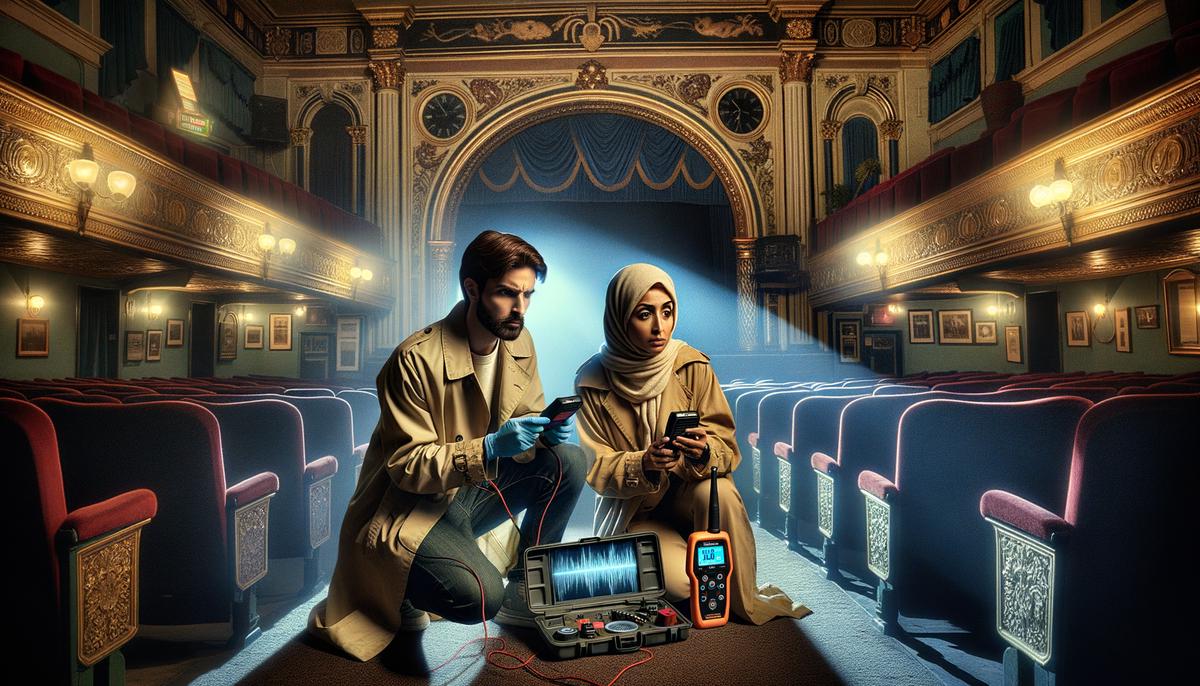
In the grand sweep of Drury Lane Theatre, the presence of its spectral inhabitants serves as a haunting reminder of its storied past. The ghosts that roam its halls are not just echoes of history but active participants in an ongoing tale, blending the past with the present in a way that captivates and chills. As you sit in the audience, remember: the performance you witness may be shared with those who trod the boards long before you.
- Mackintosh C. The Theatre Royal, Drury Lane. Cambridge University Press; 1992.
- Clarke R. A Natural History of Ghosts: 500 Years of Hunting for Proof. Penguin; 2012.
- Underwood P. Haunted London. Harrap; 1973.
- Doran J. "Their Majesties' Servants": Annals of the English Stage. W.H. Allen; 1888.

